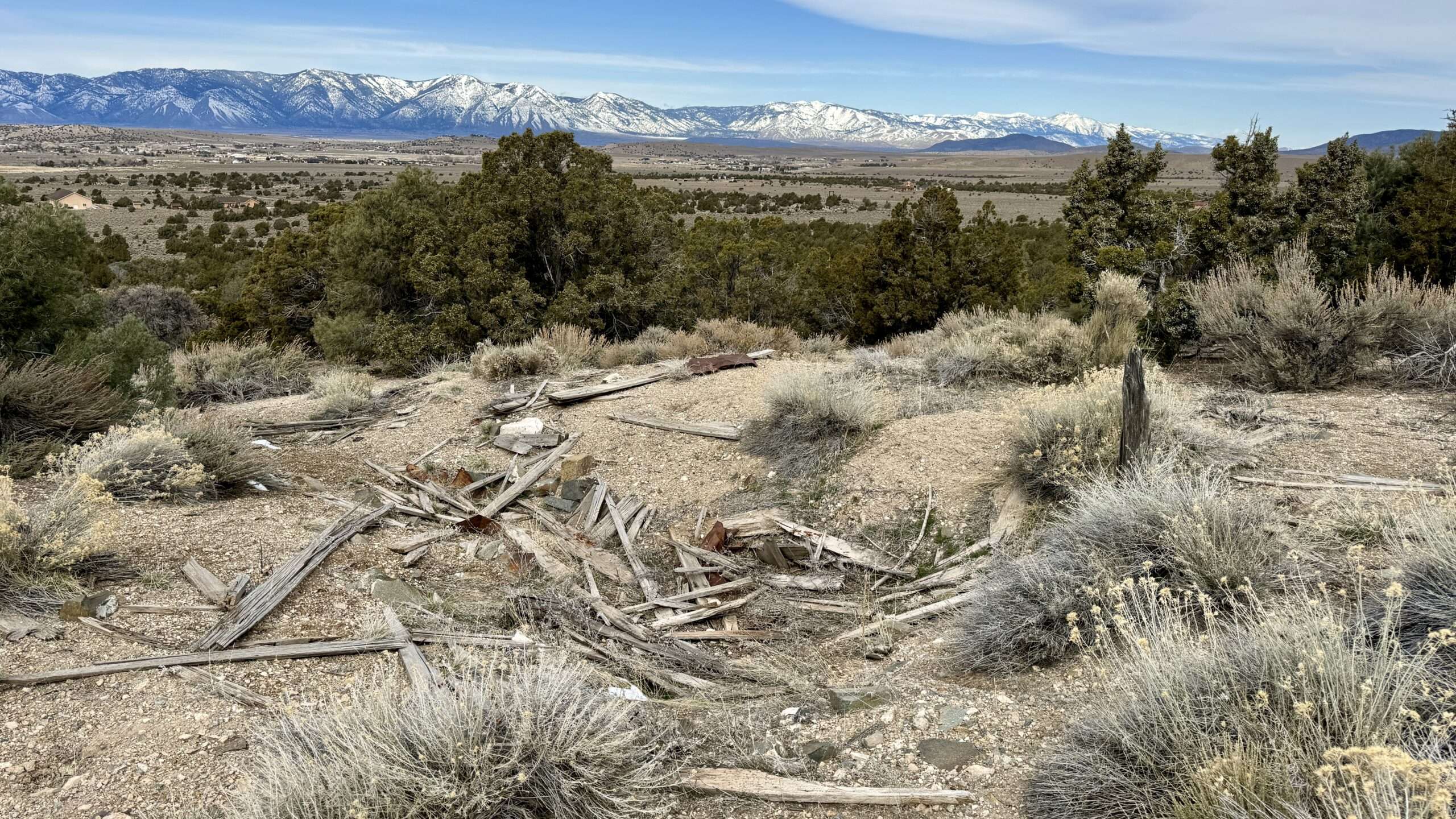
Fish Springs, Carson Valley, is now a picturesque part of Nevada filled with horse properties. Over a hundred years ago, the region was thought to become the next Virginia City. Following the discovery of rich ore ledges, miners arrived by the dozen to stake their claims. Developers laid out Zirnville, which soon had boarding houses, a store, and a stage line.
Widdelin “Bill” Zirn named his mine “Last Chance.” The name was prophetic; it was indeed his last chance.
Widdelin Zirn
Widdelin “Bill” Zirn and his brother Ed emigrated from Germany, where they had learned to prospect for gold. After mining in Mexico and California, they settled in Carson Valley in 1880. The brothers found employment at the Dangberg ranch. Sadly, Ed died the following year of consumption (tuberculosis).
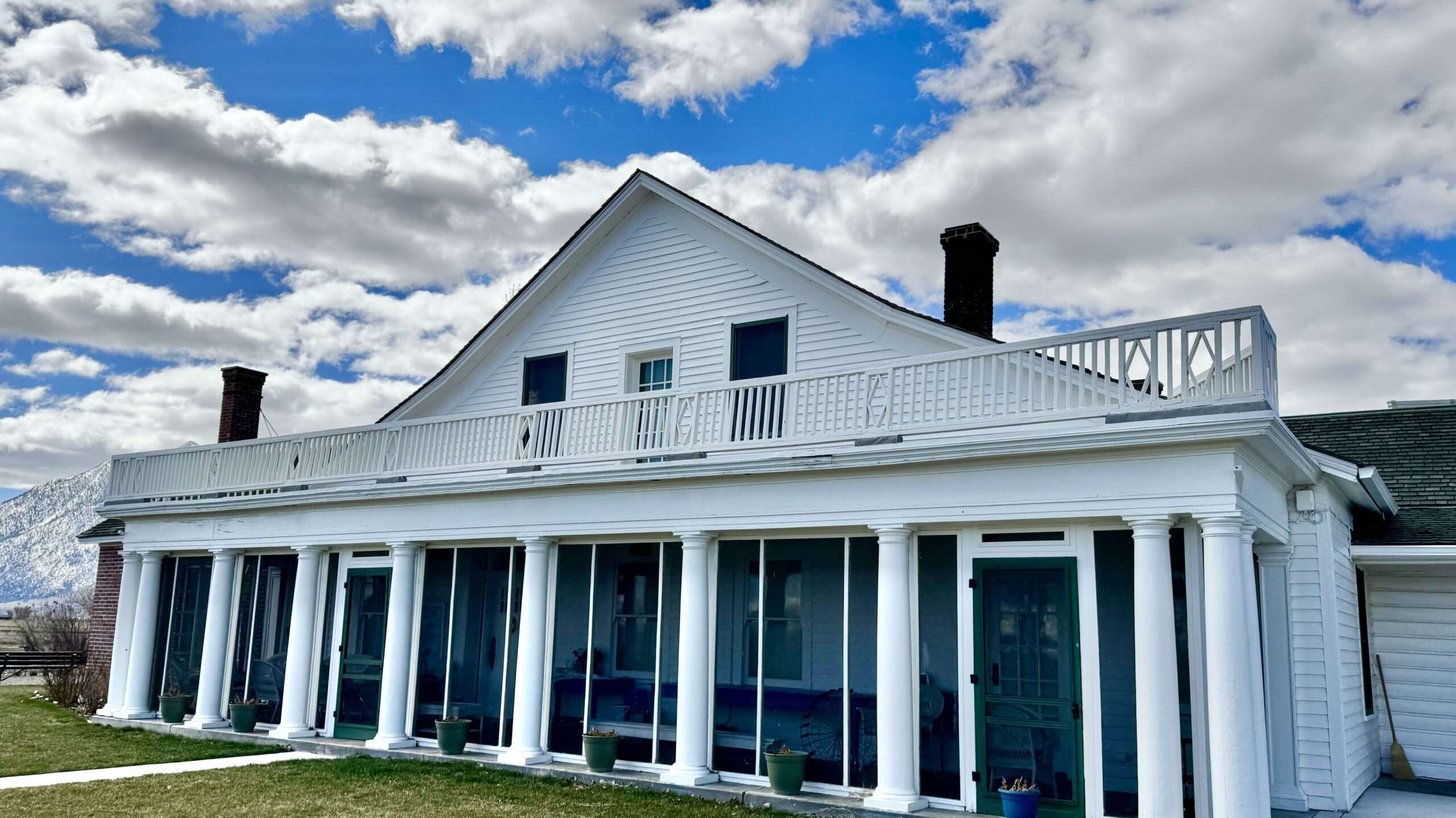
Zirn was tall and gaunt, with a bushy beard and hair to his shoulders. He resembled a character in a Hans Anderson storybook. He was known as a “crank” and enjoyed too much liquor. But, he was also known as the “oracle of the county.” Prospectors bought ore samples for him to inspect, and he walked claims with others, pointing out promising ledges.
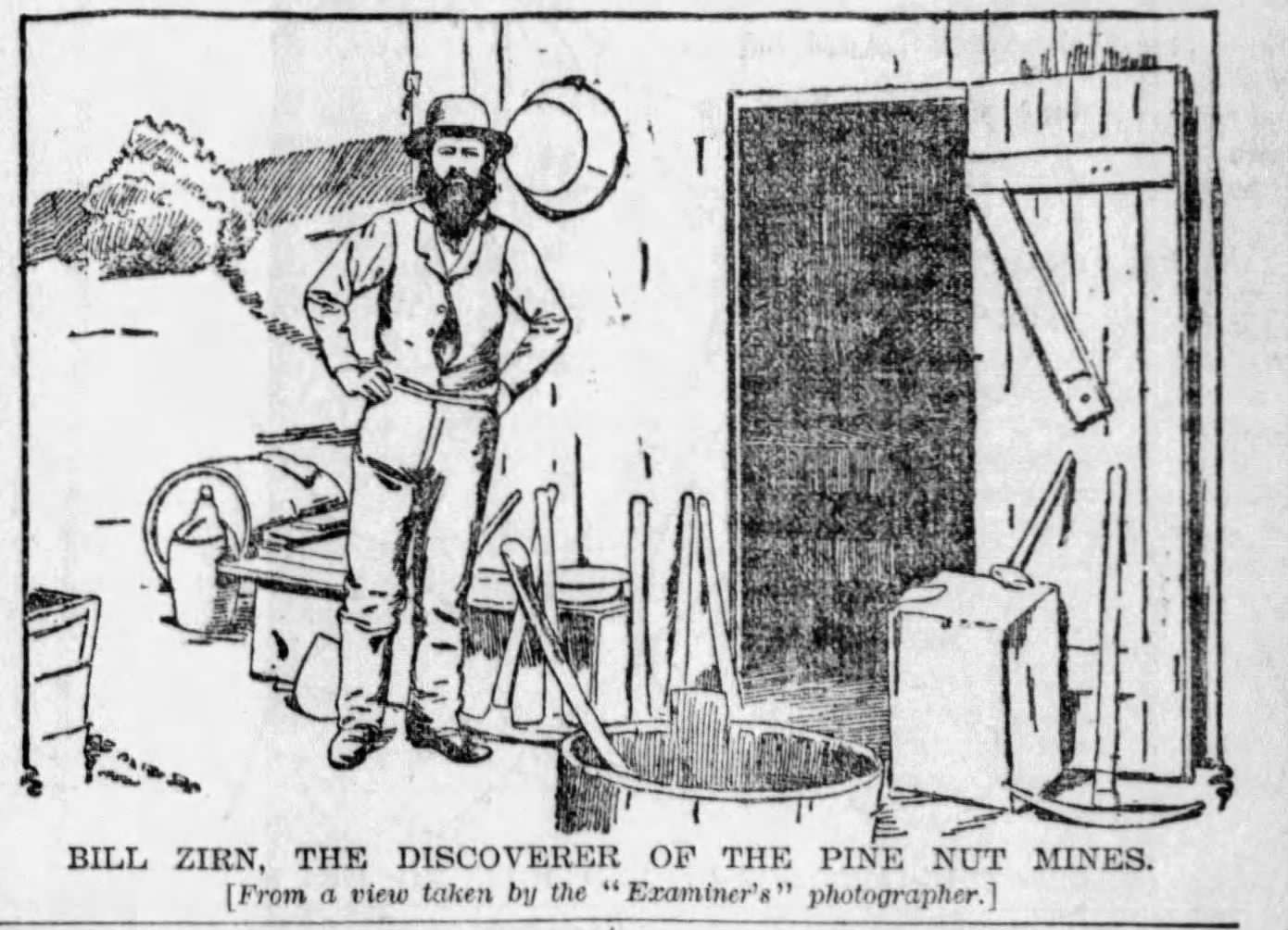
(Credit: The San Francisco Examiner)
Zirn worked on several claims in the Carson Valley, including School House Canyon above Genoa and the east fork of the Carson River. He earned $4 to $7 daily in gold but was looking for more. He soon partnered with Carson City butcher Otto Schultz.
“Another Comstock”
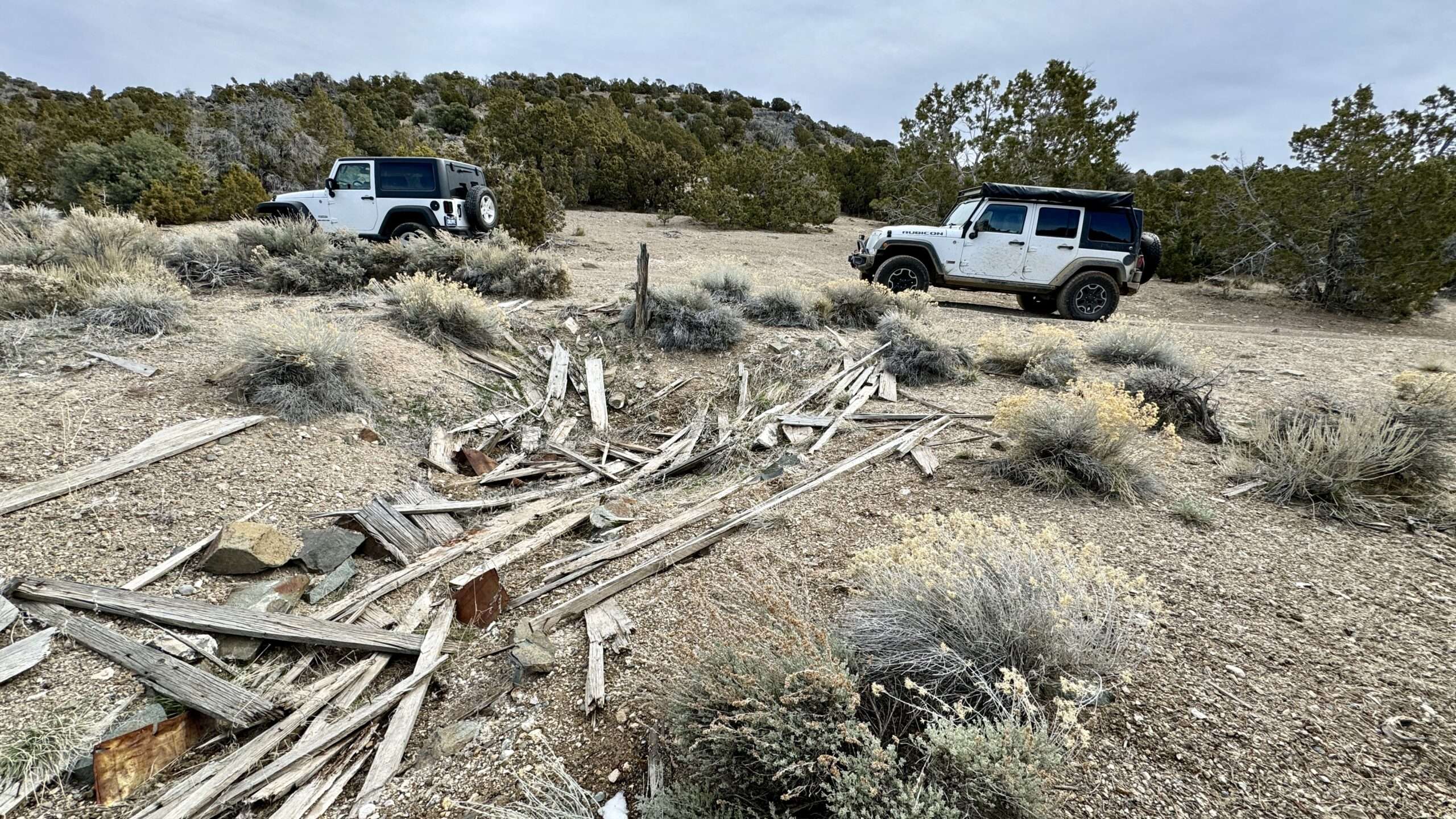
Zirn and Schultz expanded their prospecting into the Pine Nut Range. In 1883, they discovered a promising ledge of gold a mile and a half from the Pete Anderson Ranch. They named their mine “Last Chance.” Zirn traveled to the assay office in Carson City with samples from the mine. On the return trip on the Raycraft stage, the horses became frightened. Zirn jumped from the stage, fell under a wheel, and broke both legs below the knee. Recovery was months long, and working on the mine was put on hold. Little development occurred for almost a decade due to a lack of profit.
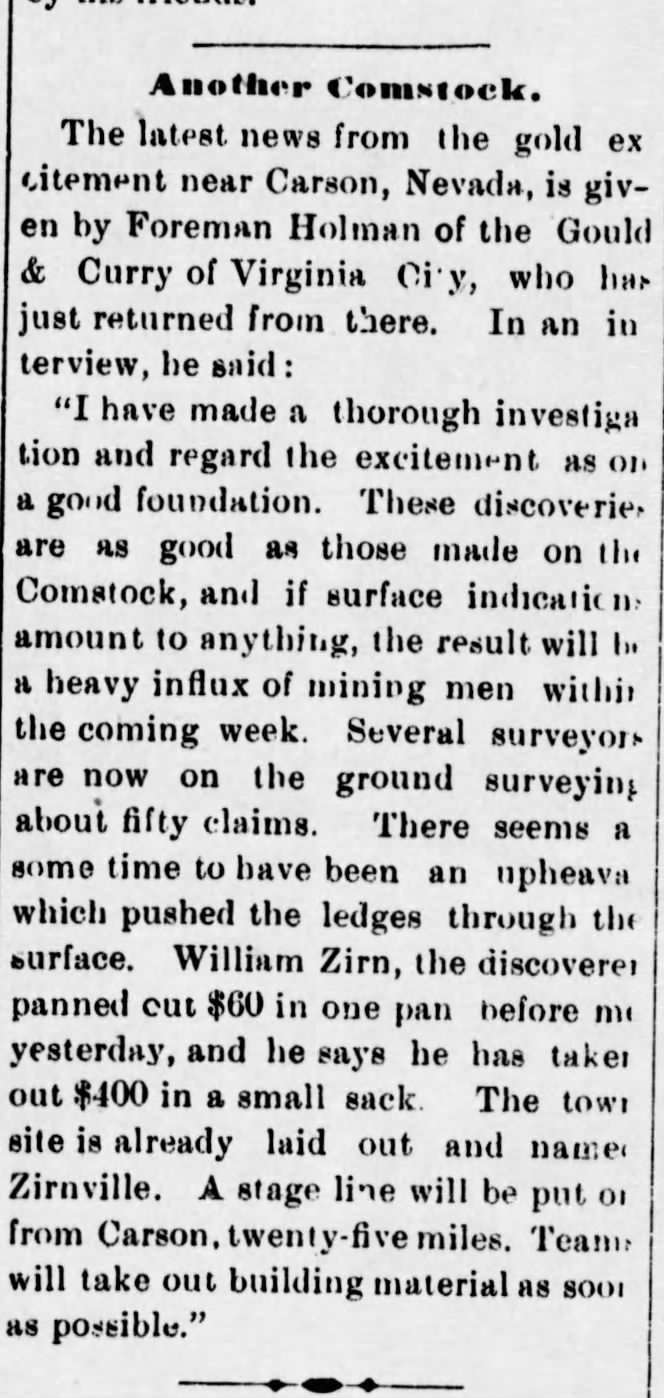
Tombstone, Arizona · Sunday, July 19, 1891
A wonderfully rich ledge
In May 1891, the partners discovered a “wonderfully rich” ledge—word of their discovery spread. They transported ore to the Chris Dangberg ranch to process.
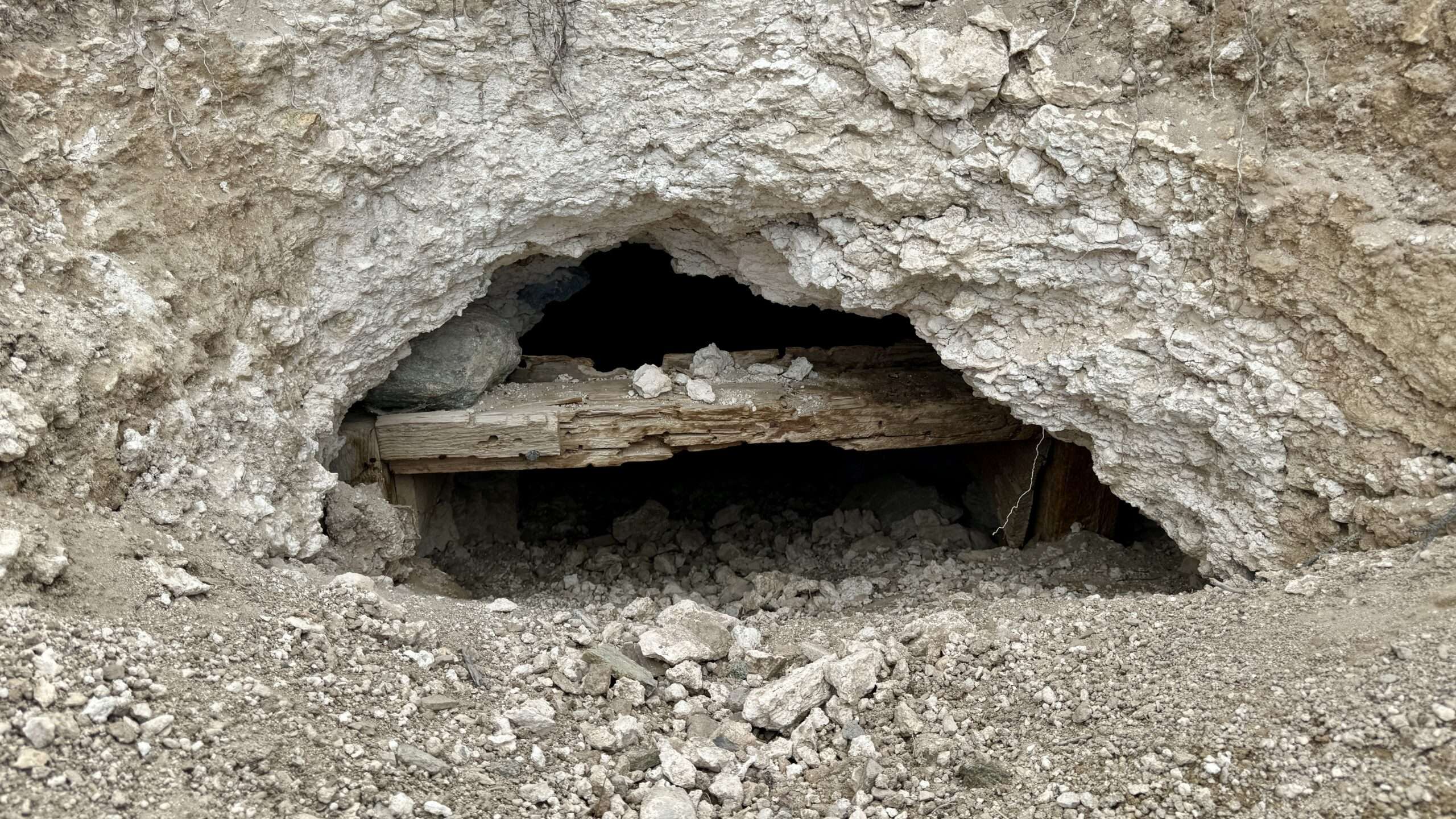
Zirn and Schultz displayed their ore at the Genoa Courthouse, which piqued the interest of others. By July, prospectors arrived by the dozen, many of whom were experienced miners from Comstock. All armed themselves in the expectation of protecting their claims. It was thought “Bloodshed may follow over some ledges.”
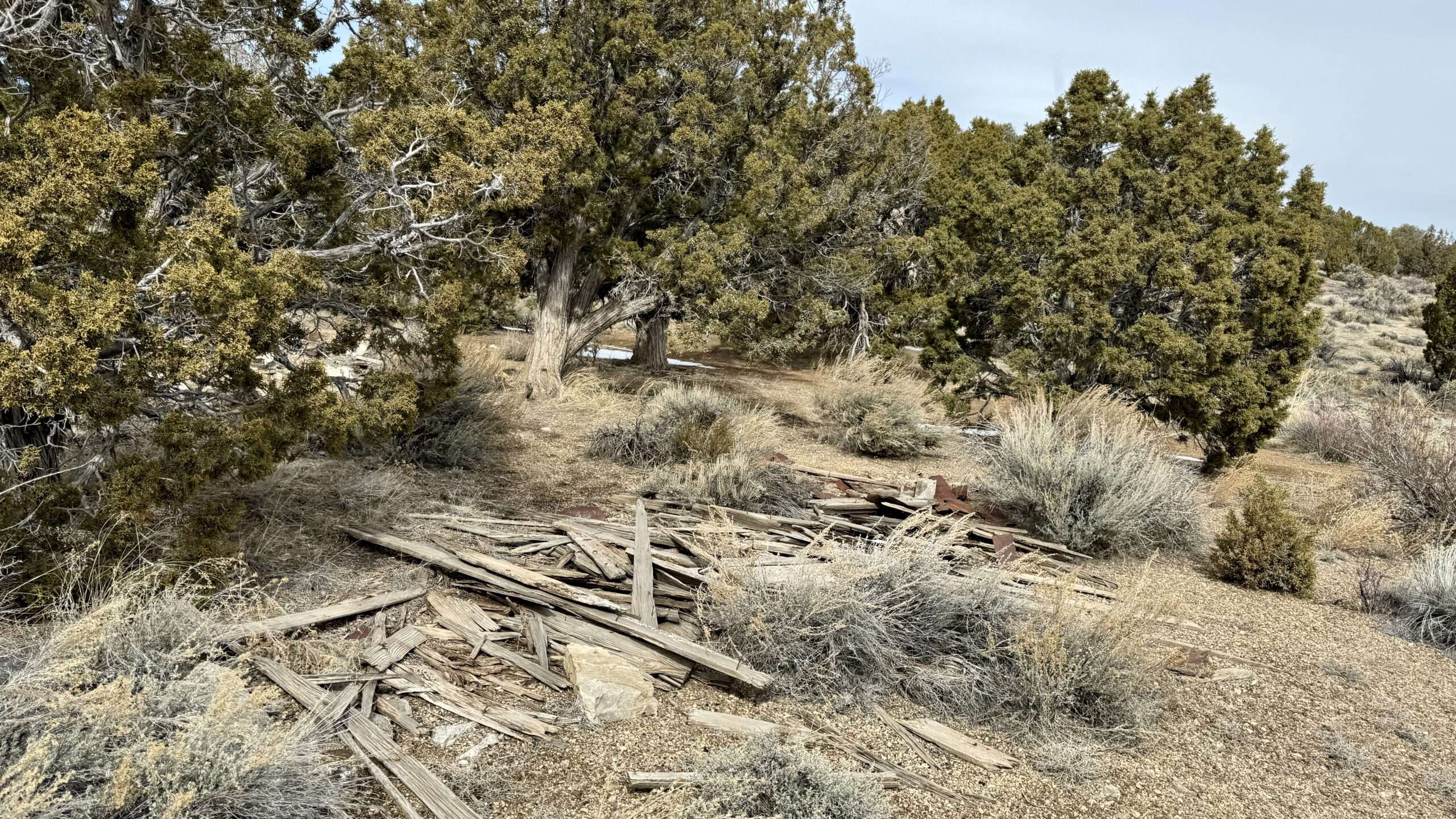
Hebe Holman, foreman of Best and Belcher and Gould & Curry Mines in Virginia City, traveled to the Pine Nut mines to inspect the claims. He found a 10-square mile section containing multiple quartz ledges and free surface gold.
I have made a thorough investigation and regard the excitement as on a good foundation. These discoveries are as good as those made on the Comstock.
Hebe Holman, July 1891
In September of 1894, Zirn and Schultz discovered a new strike. They ordered a new 5-stamp mill, which went into operation on April 1, 1896.
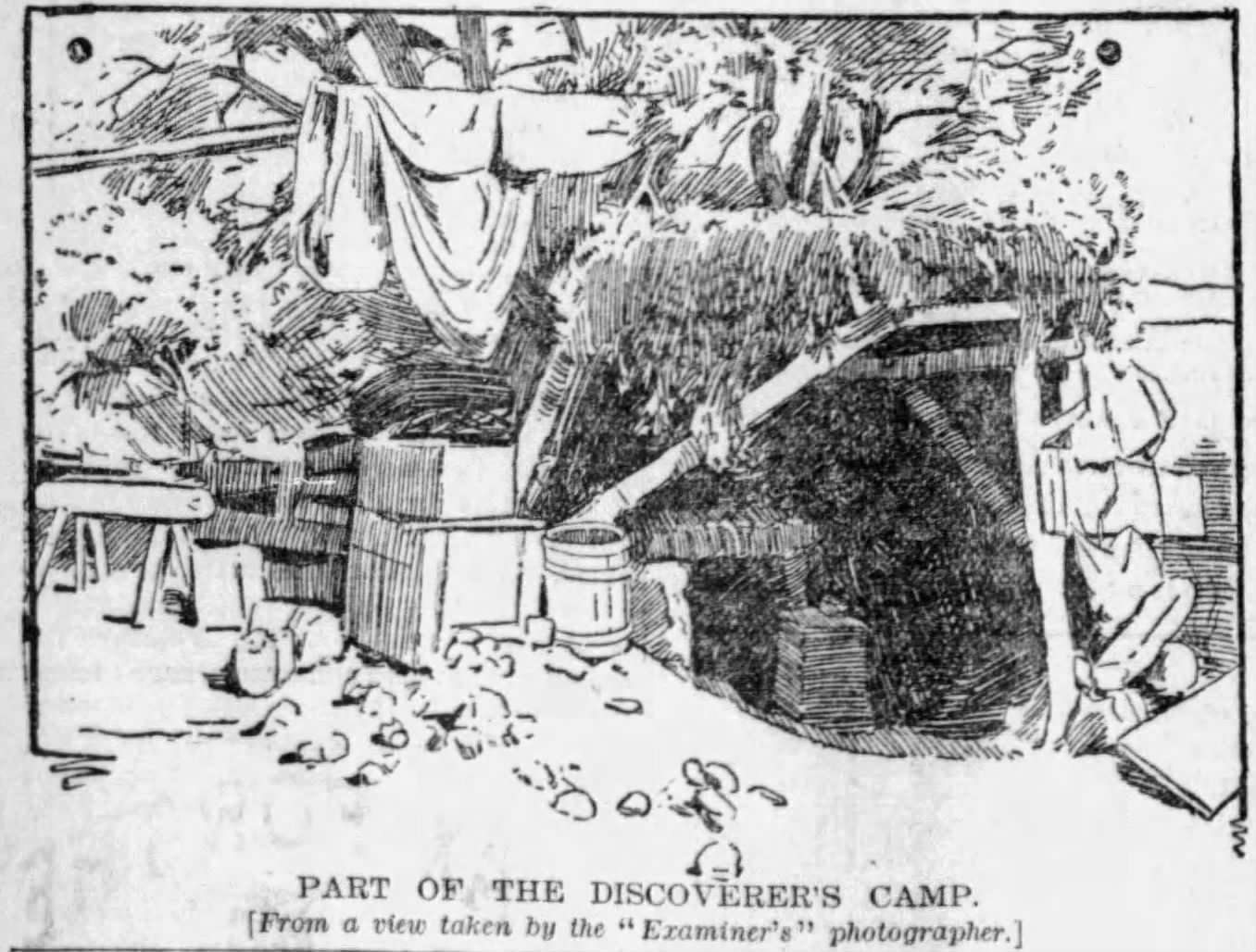
(Credit: The San Francisco Examiner)
Between 1891 and 1895, miners extracted over $17,000 of gold from the mines around Zirnville. Bloodshed never arrived in Zirnville, although stories about failed sales, lawsuits and fights over water rights abound. Only one incident of claim jumping occurred when a miner’s feisty wife dug in the middle of another’s claim.
Zirnville
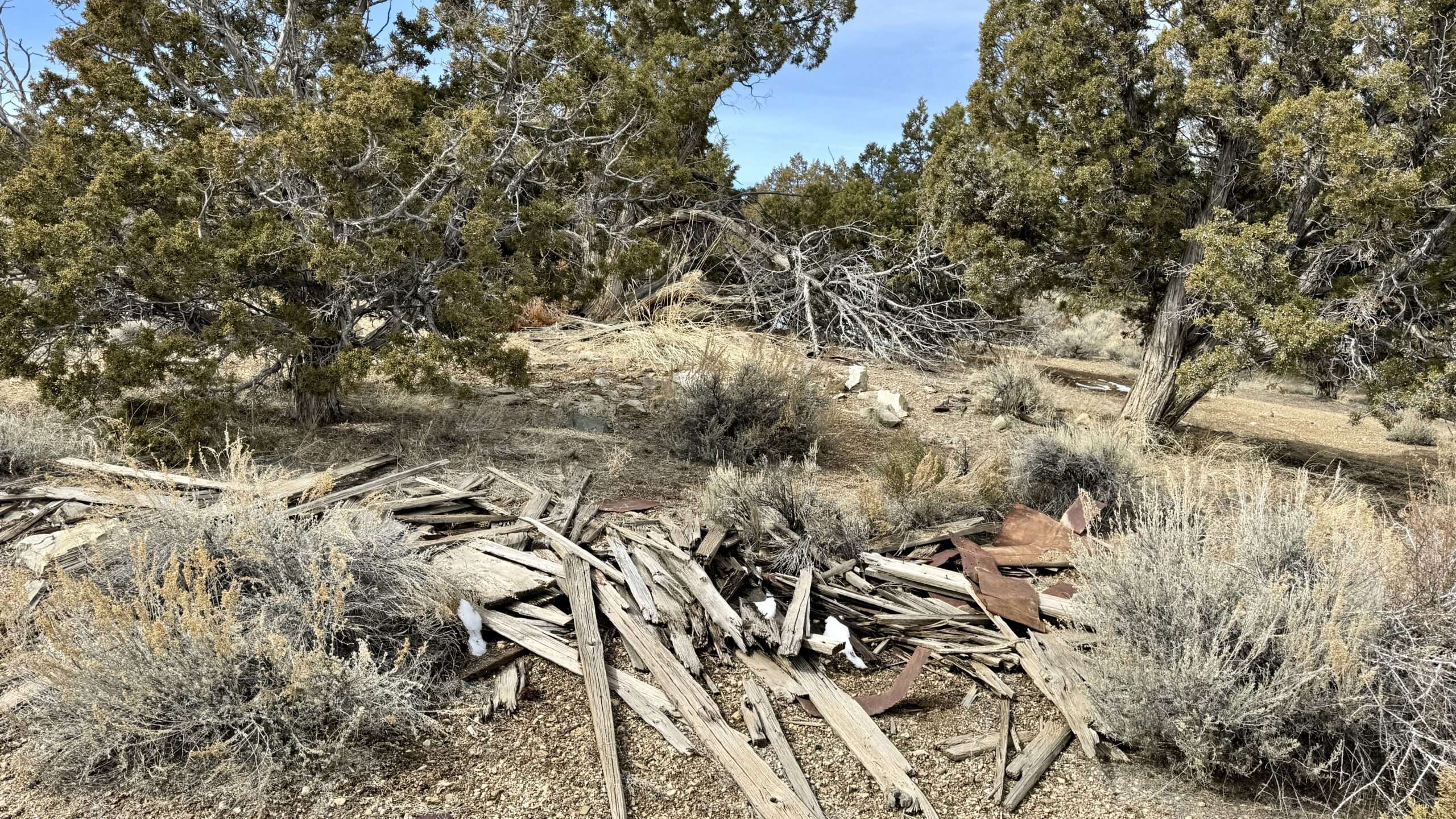
Zirn built a cabin half a mile from Last Chance to continue to work the claim. As no housing was available by the mines, most miners stayed at the Pete Anderson Ranch. The fortunate few remained in the house, 6 men to a room. The less fortunate were housed in the barns and outbuildings. Reportedly, Anderson made a small fortune as an innkeeper.
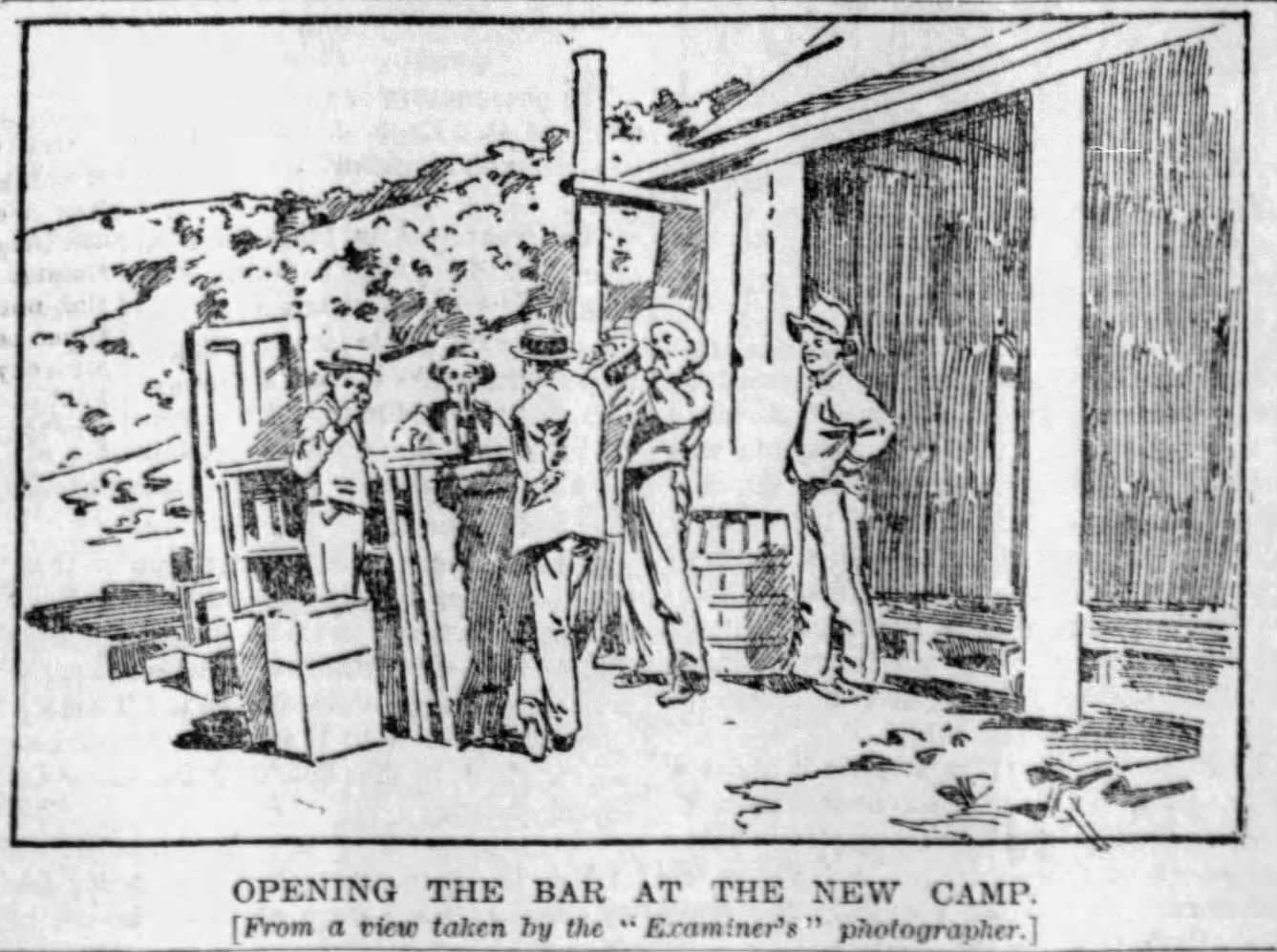
(Credit: The San Francisco Examiner)
Anderson and Charles Holbrook saw an opportunity and opened a bar on August 1, 1891. Anderson added a boarding house with furniture from Carson City. The bar was a shack but Anderson ordered a counter from Carson City. Before Anderson could move the bar inside, the miners raised their glasses, christened the bar and pledged the new town of Zirnville.
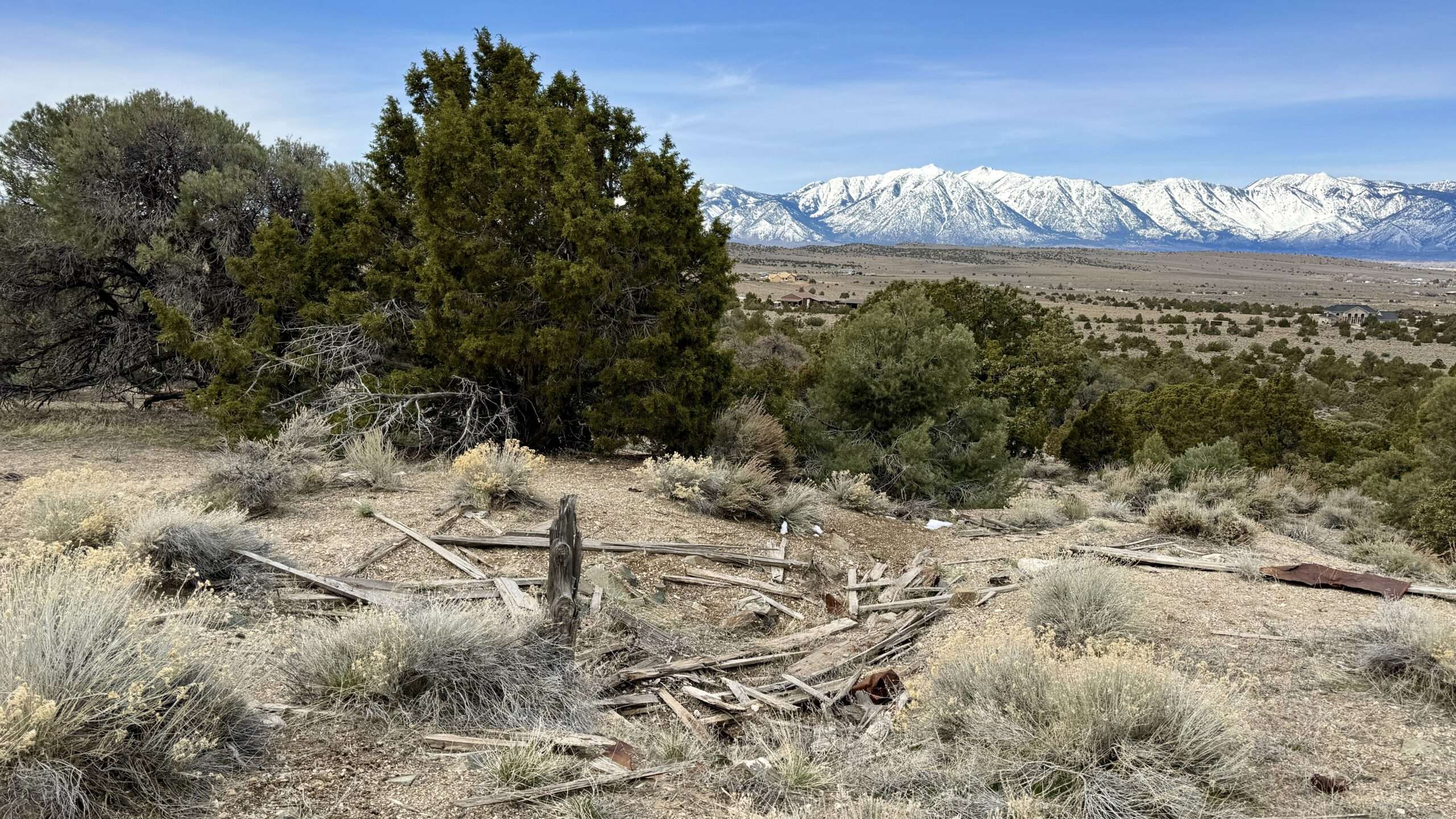
Anderson and Holbrook laid out Zirnville in 1891, which they named in honor of the miner who started it all. The partners sold lots for $50 each. By 1896, it was a “little settlement.”
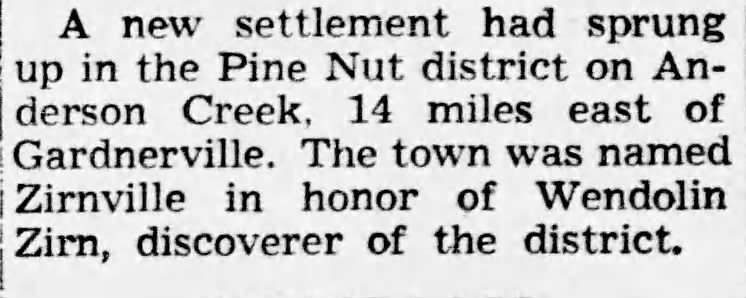
Reno, Nevada · Tuesday, April 02, 1946
Zirnville contained around a dozen cabins. The Raycraft brothers and Douglas County Sherrif McCormick owned cabins up the canyon between town and the mines. Zirn and Schultz planned a boarding house. W.H. Stone had a comfortable cabin and stable. Warren Whitney and Jack Wall planned a large saloon and a miner’s supply store to run by April 5.
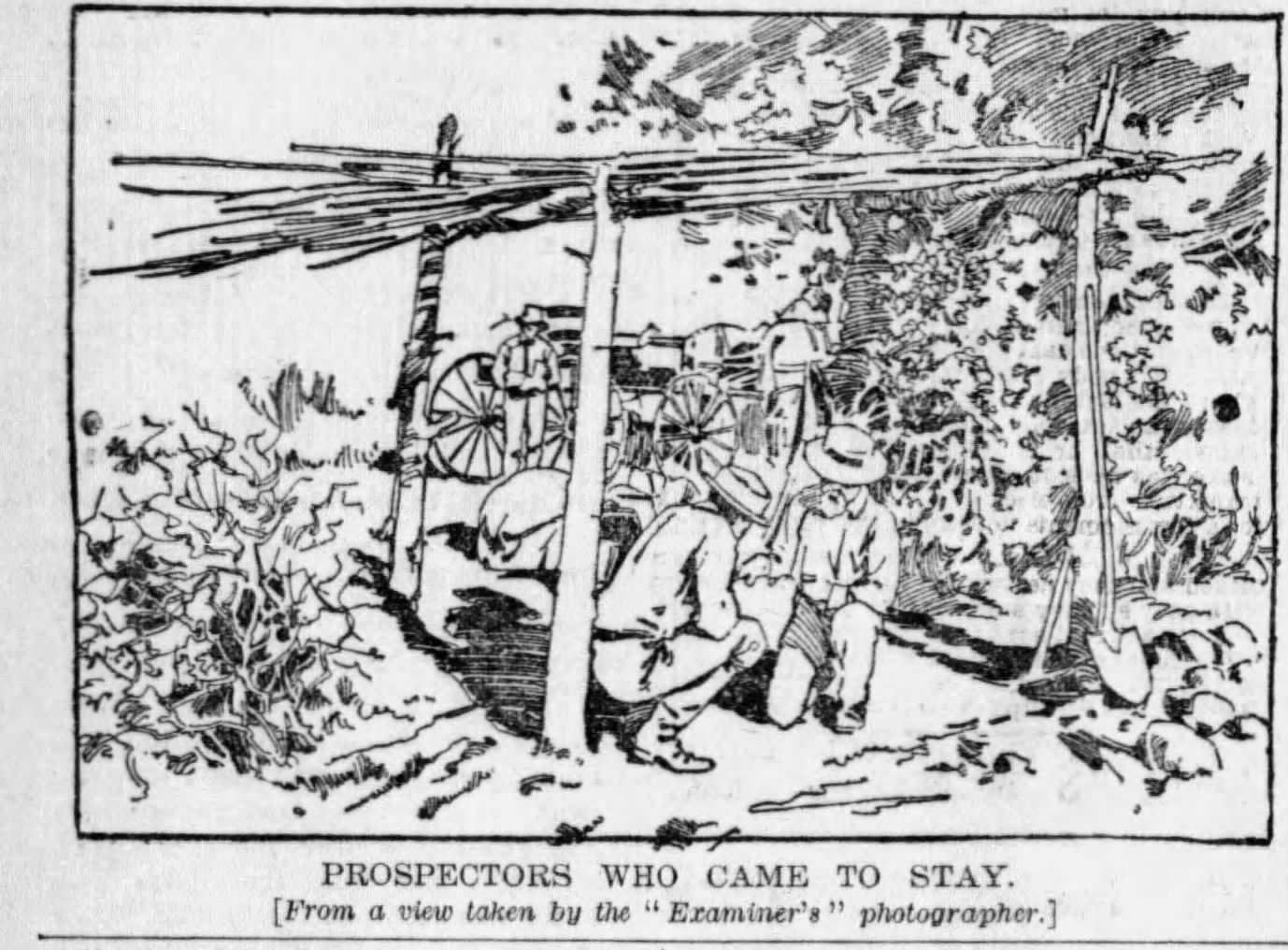
(Credit: The San Francisco Examiner)
Oliver Roberts and Bill Blackburn ran a livery stable and 4-horse stage to Genoa and Carson City. They scheduled to operate daily, but some said they ran “when the humor takes the driver.”
The deadly headstone
Zirn only worked the Last Chance for a handful of years. The name was prophetic; the mine was indeed his last chance.
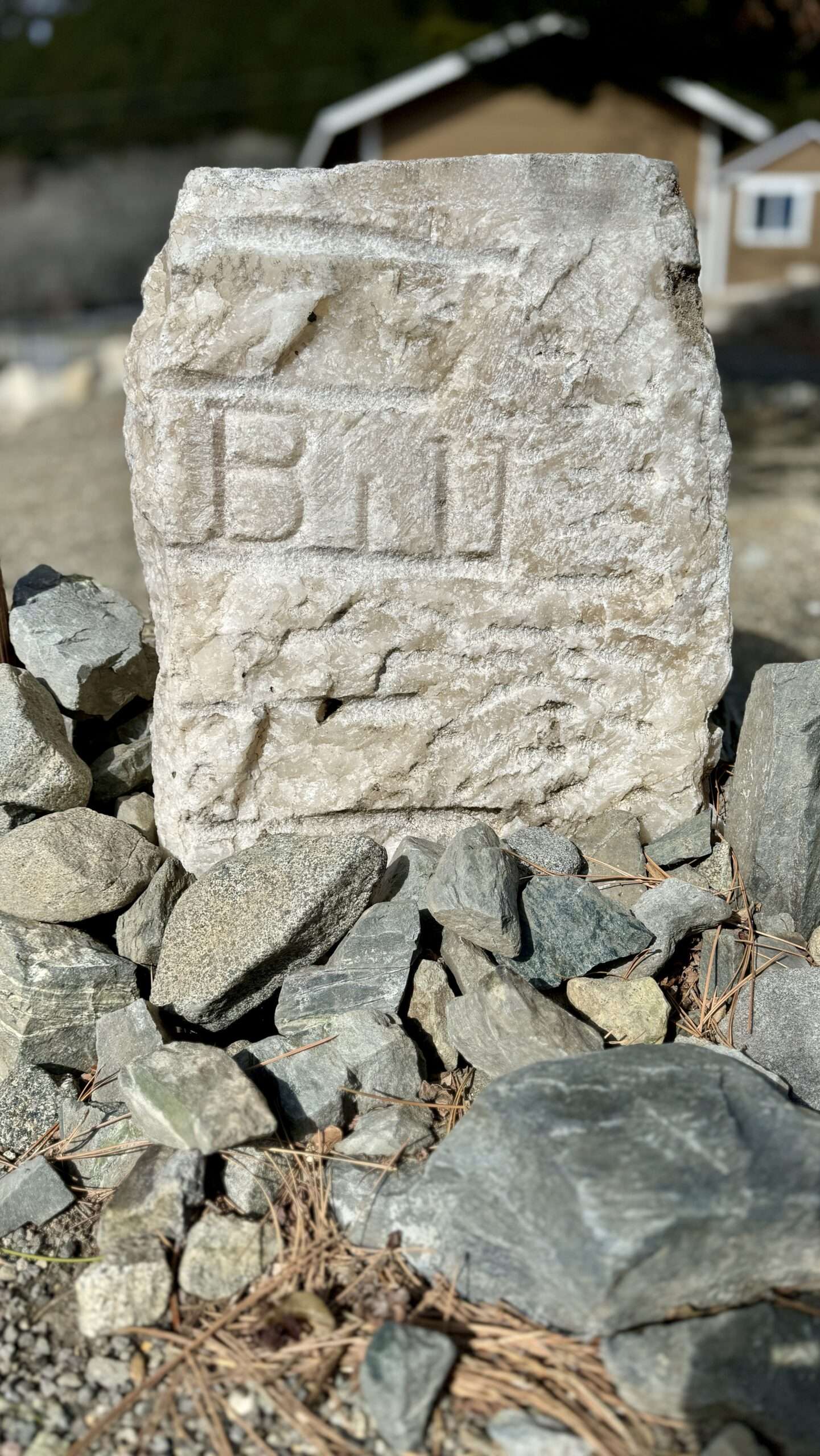
On June 6, 1896, Zirn worked with Portugese Frank and warned him to be careful of a 4-foot boulder above, which was ready to break loose. Zirn bent to pick up a piece of ore just as the rock crashed down the slope, striking his head and back. Crushed by the boulder, Portugese Frank could only see Zirn’s face contorted in pain. Unable to move the one-ton boulder himself, Frank ran for help. It took four men to extract Zirn. They laid him under a tree, where he took his last breath.
The man who was regarded as the father of the District was the first victim
County coroner Shelby traveled to the mine to investigate. Rulling the death accidental, he transported the remains to Genoa for burial. Zirn was only 50 years old.

Zirns headstone is simply engraved “Bill.” In a strange twist, it was cut from the boulder from the Last Chance Mine that ended his life.
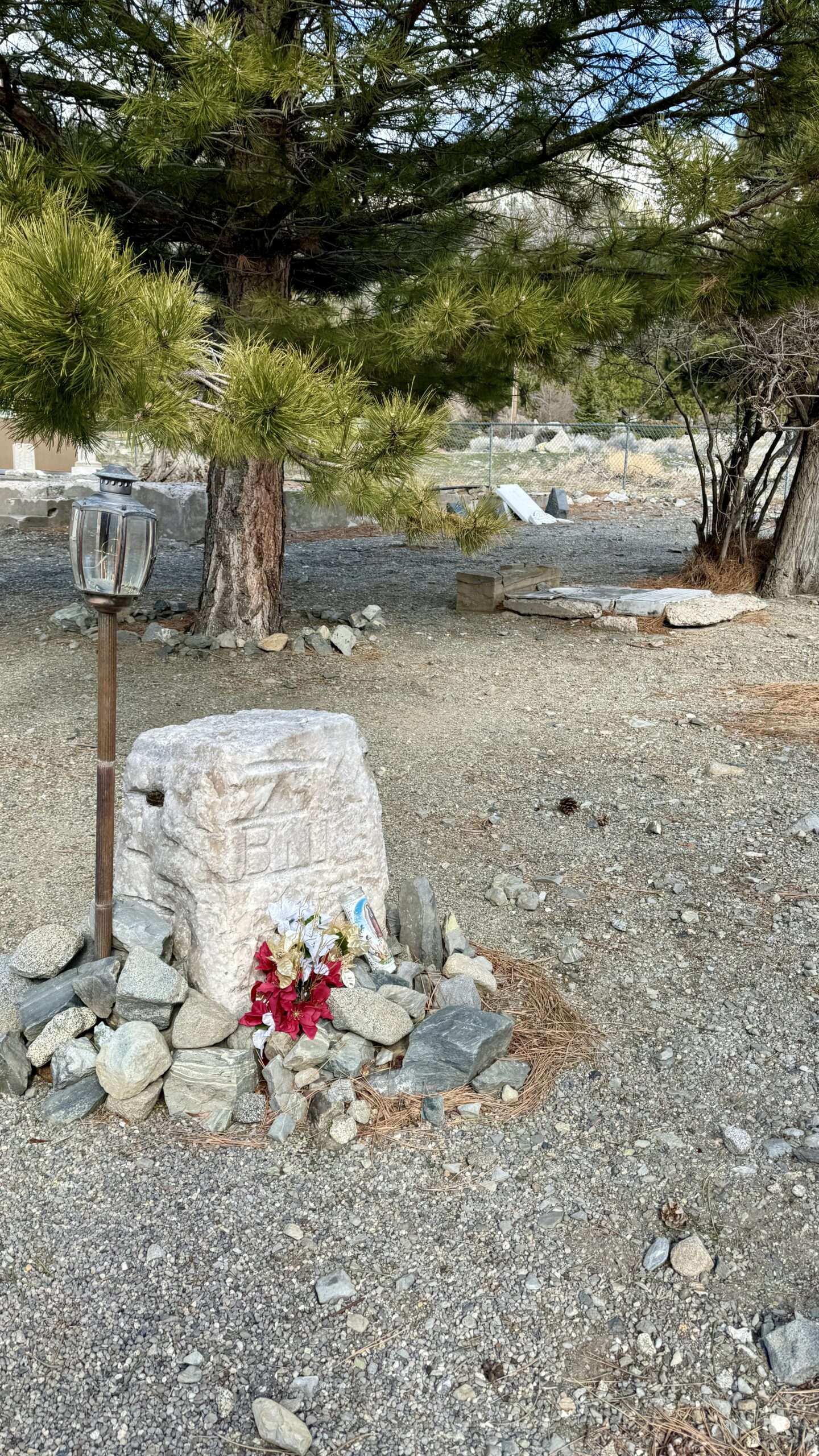
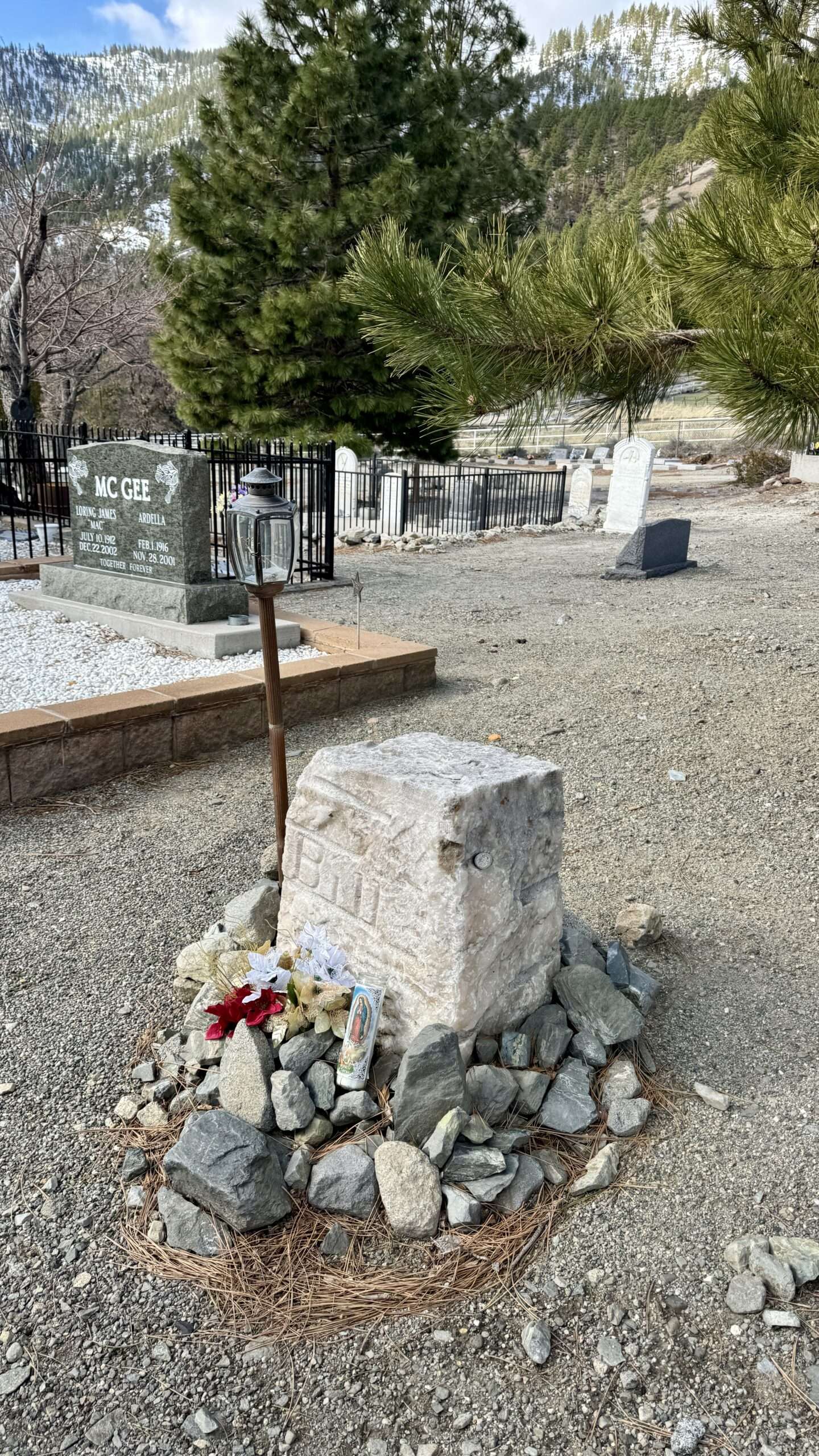

Additional newspaper articles
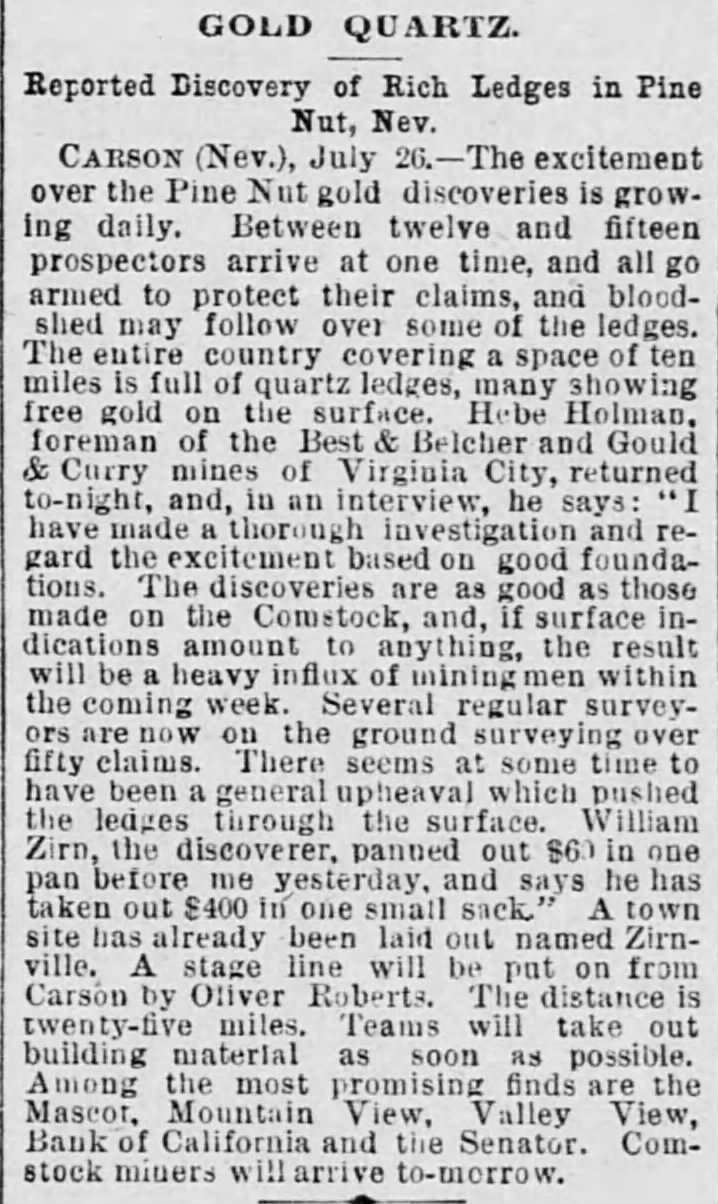
San Francisco, California · Monday, July 27, 1891
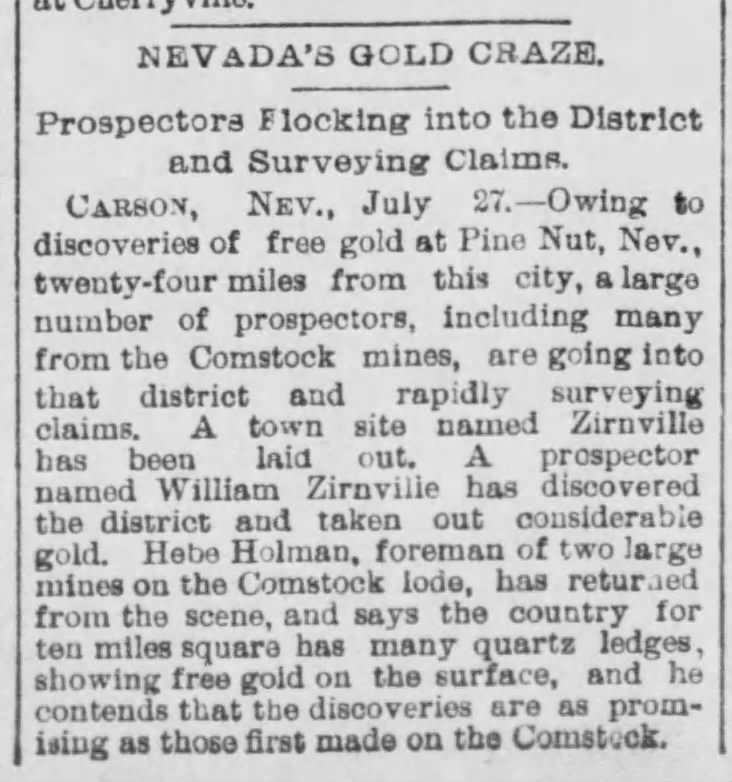
Savannah, Georgia · Tuesday, July 28, 1891
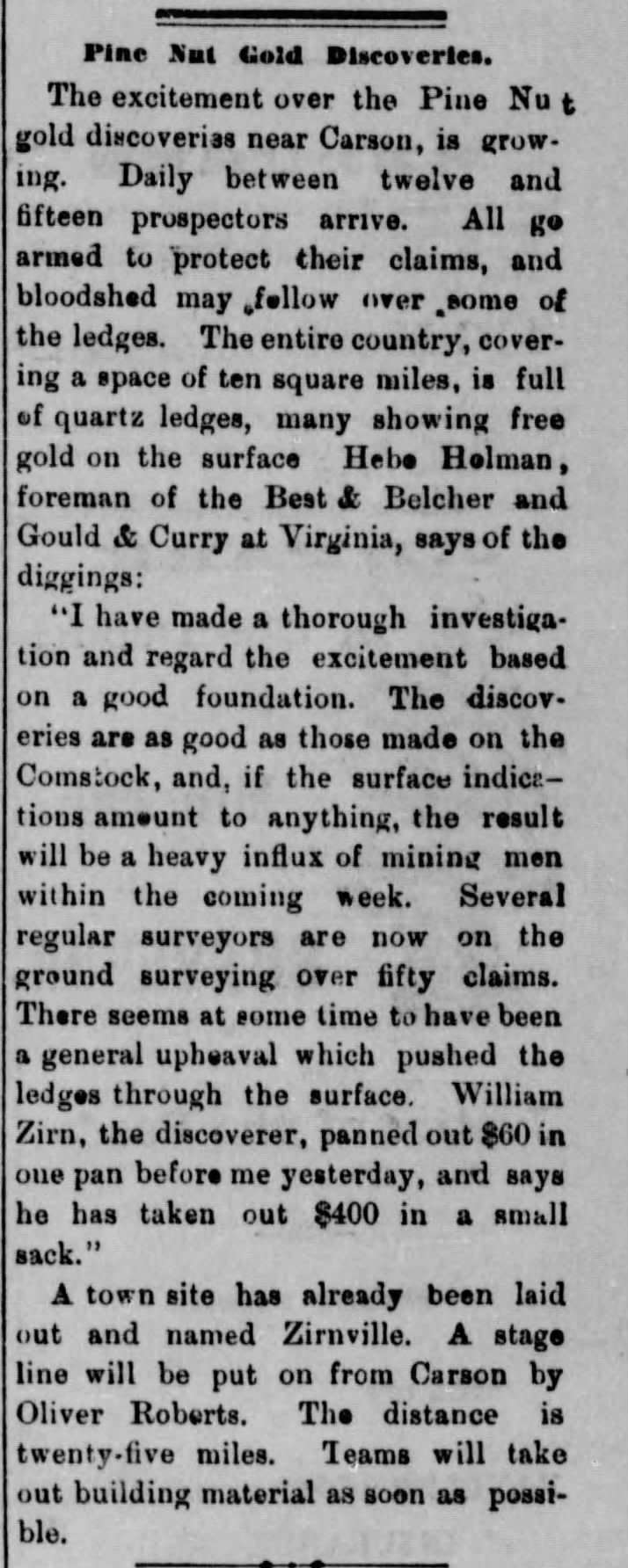
Battle Mountain, Nevada · Thursday, July 30, 1891

Reno, Nevada · Thursday, April 02, 1896
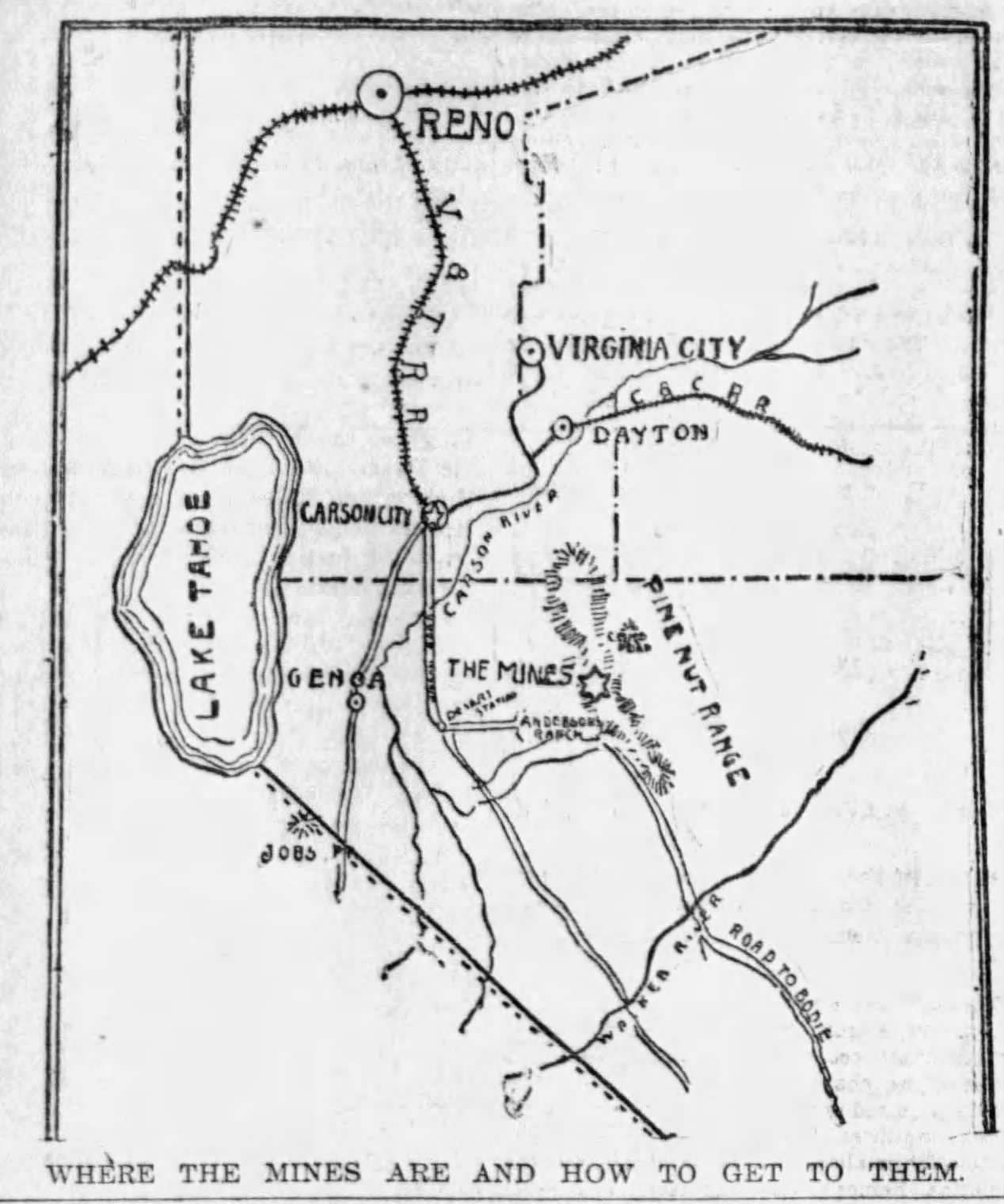
The San Francisco Examiner
San Francisco, California · Thursday, August 13, 1891
WANT MORE GHOST TOWNS?
For more information on more than 500 ghost towns in Nevada & California, visit the interactive Nevada Ghost Towns Map or a list of Nevada ghost towns.

References
- Carson Valley, Nevada: The Fatal Marker on Bill Zirn’s Grave
- Cemeteries of Carson City and Carson Valley. Arcadia Publishing, 2010. Pages 89-90.
- The Central Nevadan Battle Mountain, Nevada · Thursday, July 30, 1891
- Find a Grave: Widdelin “Bill” Zirn
- Nevada Expeditions: Zirnville
- Nevada State Journal Reno, Nevada · Thursday, April 02, 1896
- Nevada State Journal, Reno, Nevada · Tuesday, April 02, 1946
- The San Francisco Call and Post San Francisco, California · Monday, July 27, 1891
- The San Francisco Examiner, San Francisco, California · Thursday, August 13, 1891
- The Savannah Morning News Savannah, Georgia · Tuesday, July 28, 1891
- Tombstone Weekly Epitaph Tombstone, Arizona · Sunday, July 19, 1891
Leave a Reply